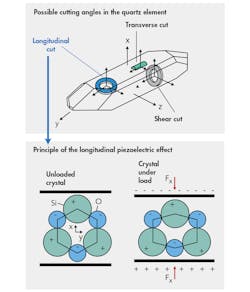Robust Industrial Manufacturing Relies on Piezoelectric Sensing (.PDF Download)
The vision of Industry 4.0 is already becoming a successful reality in numerous industrial applications nowadays, in sectors such as automobile manufacturing, medical technology, and electrical engineering. Unprecedented optimization of all production processes is now possible thanks to increased digitization and the growth of machine and system networking. Consistent control of the production chain—with zero-defect production as the goal—is essential for any modern production business to hold its own in the market of the future.
Just a few years ago, virtually all products were still being inspected offline, i.e. after the manufacturing process. Today, by contrast, more and more products are actually monitored during the production process—or “inline”—as a way of avoiding unnecessary costs. For joining, assembly, and testing, sensor technology based on the piezoelectric principle is a fundamental factor in optimizing production processes, with zero-defect production as the goal. This technology is well-suited for measuring physical variables such as force, pressure, acceleration, and torque.
Fundamentals of Piezoelectric Sensors
The physical basis for the using these sensors is the “piezoelectric effect,” discovered by Pierre and Jacques Curie in 1880. When placed under a mechanical load (Greek "pie-zein": to press or squeeze), piezoelectric materials generate electrical charges. A major step toward the application of the piezoelectric effect was taken in 1950, when Walter P. Kistler patented the charge amplifier for piezoelectric signals.
The piezoelectric effect is particularly effective with a quartz crystal: When a mechanical load is applied to quartz that has been suitably processed, a charge signal can be generated from it that’s directly proportional to the acting force (Fig. 1). Therefore, in contrast to other technologies, capture of the measurand using the piezoelectric effect doesn’t depend on strain and displacement.
1. Particularly good use can be made of the piezoelectric effect with a quartz crystal. When subject to a mechanical load, it generates a charge signal that's directly proportional to the acting force.

